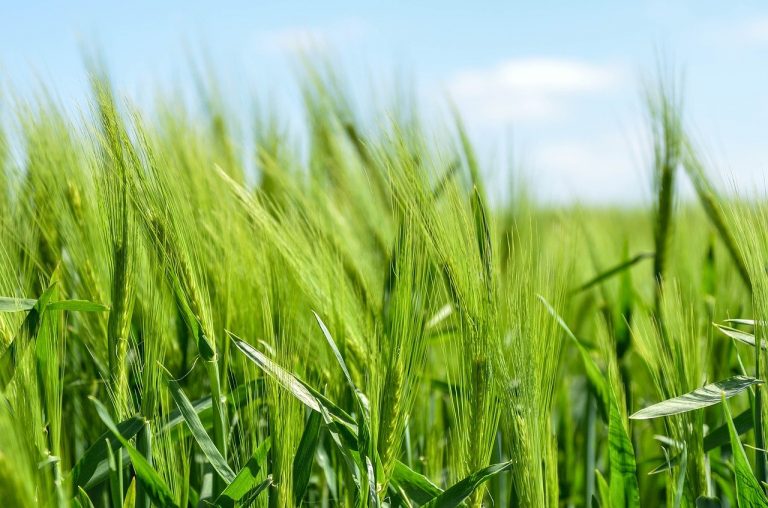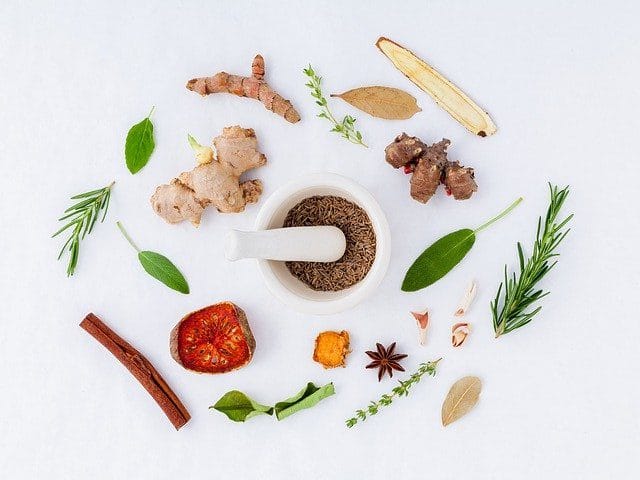If you are eager to take a dive into the world of organic foods and learn what are the benefits of organic food for the body, this mini-guide should be of help. Find out what is the difference between organic vs non organic food, what is the USDA label and what are the main types of organic foods within the next few lines.

What Is Organic Food?
A few years ago, organic food could only be seen in specialized stores selling healthy food. Nowadays, organic food is a common type of food found in the great majority of supermarkets around the world. However, some people may still experience some degree of confusion when visiting the produce aisle and trying to figure out which products are truly organic and what it actually means to shop organic.
Shortly put, organic food is the result of organic farming, which is the method used by farmers to grow and process their products, with emphasis on vegetables, fruits, meat, grains, or dairy. These methods refer to practices that are meant to keep the pollution of the environment to a minimum, make sure the quality of the soil and water is improved, offer a safe habitat where livestock can behave normally in a natural habitat, all while promoting self-sustaining cycle of resources.
Organic farming does not allow the use of synthetic fertilizer or sewage sludge used for similar fertilization purposes, pesticides, growth hormones, anti-pest irradiation, antibiotics, any for of genetic engineering that can be used to improve crop yields, lower the risk of disease and boost the resistance to pest.
On the other hand, organic foods are obtained with the help of the following materials and processes:
- Manure from lithe livestock, plant waste that can be left on the fields (green manure) and compost that can positively affect the quality of the soil
- The rotation of plants for preserving the quality of the soil, as well as to stop the disease or pest cycles
- Crop covering to steer clear from erosion when a parcel is not used for a long period of time
- Weed-controlling mulch
- Insect traps and the use of predatory insects for better control of pests
- Natural pesticides and, rarely, synthetic pesticides that have received the seal of approval to be used by organic farmers, usually as a last resort used together with various organic solutions
- Livestock vaccines
- Ensuring the feeding needs of at least 30% of the livestock are completed on pastures during the grazing season
- Ensuring outdoor access and safe and healthy living conditions for all livestock
- Feeding the livestock with organic nutrients
What Is The USDA Green Label?
The fruits, vegetables, grains, or meat resulting with the help of these practices are labeled as organic. The USDA green label is a special label released by the U.S. Department of Agriculture in order to certify that a food is organic as a result of meeting all organic requirements according to the USDA standards. The respective standards are used to regulate the way the organic foods are processed, grown, or manipulated.
All products that wear the “organic” label need to be USDA-certified. When this occurs, it is also possible for producers to use official “organic” seals. Producers selling less than $5,000 per year can be excepted from this rule. However, they need to comply with the guidelines that refer to the production of organic food, while not having to get certified. These producers are allowed to label their products as being organic, without using the official organic sealing.
What Do Organic Food Labels Read?
There are strict guidelines that organic food producers must comply with when choosing the descriptions of their product on the labels, as follows:
Organic.
When shopping for a food that contains several ingredients and you notice the label reads “organic”, this means that at least 95 percent of the respective ingredients have been certified as being organic, minus the water and the salt. The remaining non-organic ingredients are also supposed to belong to a list of officially approved extra ingredients and it is possible for these non-organic ingredients to also have a seal.
100% Organic.
When a product label reads “100% organic”, it means that the respective foods, whether single-ingredient or multiple-ingredient foods (excluding water and salt), have been certified as being organic.
Made with Organic Ingredients.
When a product that consists of several ingredients carried the “made with organic” label, it means at least 70% of its ingredients have been certified as being organic. The list of ingredients needs to clearly mention which of the ingredients are organic and the respective products will not usually have a seal.
Organic Ingredients.
When less than 70% of the ingredients found in a product that consists of several ingredients is certified as being organic, it will usually not be labeled as “organic”, not it will carry a special seal. The list of ingredients will need to clearly mention which of the ingredients are actually organic.
Organic VS Non Organic Food
Foods that are labeled as “natural” are not also organic, and vice-verse. Natural foods are non-organic, but they are foods that contain zero artificial colors, zero preservatives, and no synthetic flavors. However, natural foods are not foods that have been obtained using organic processing methods. In opposition, organic foods may contain organic food coloring, but no hormones or chemicals.
Non-organic food labels can also create confusion among consumers when they read terms like “hormone-free” and “free-range”. These products do not also follow the strict organic farming requirements needed to obtain organic certification.
Benefits of Organic Food For The Body
Organic foods have been proven to have certain benefits compared to non-organic foods that are grown using standard methods. The potential health benefits of organic foods refer to the following:
- They contain more Omega-3 fatty acids, thanks to the special feeding requirements that livestock in organic farms are required to comply with, including the use of grass and alfalfa when feeding cattle, which leads to the production of Omega-3 fatty acids found in organic eggs, dairy, and meats.
- They generate smaller amounts of pesticide residue due to the use of pesticides that have been approved for use in organic farms.
- These foods contain more nutrients. There are studies that show the fact that organic foods may contain slightly more nutrients compared to non-organic foods, including various flavonoids with powerful antioxidant benefits.
- They contain smaller amounts of toxins. For instance, toxic metals like Cadmium, which is naturally identified in soil and easily consumed by plants. Organic foods appear to contain lower amounts, especially when speaking about organic grains and some fruits and veggies.
What Are the Main Disadvantages Of Organic Food?
Primarily, the main disadvantage related to organic food refers to the higher price tag in stores, as organic foods is known to cost more than conventional food alternatives. Organic farming is pricier than conventional farming, which is what contributes to the higher organic food costs.
FAQ
Organic food is obtained with the help of organic farming, which refers to the special procedures that organic farmers use for growing and processing products such as vegetables, dairy, fruits, meat, or grains.
USDA green labels refer to special types of labels released by the U.S. Department of Agriculture to certify the fact that a food is organic as a result of meeting all organic requirements according to the USDA standards.




